The Ultimate Garden Folly: Ornamental Hermitages (& Hermits)
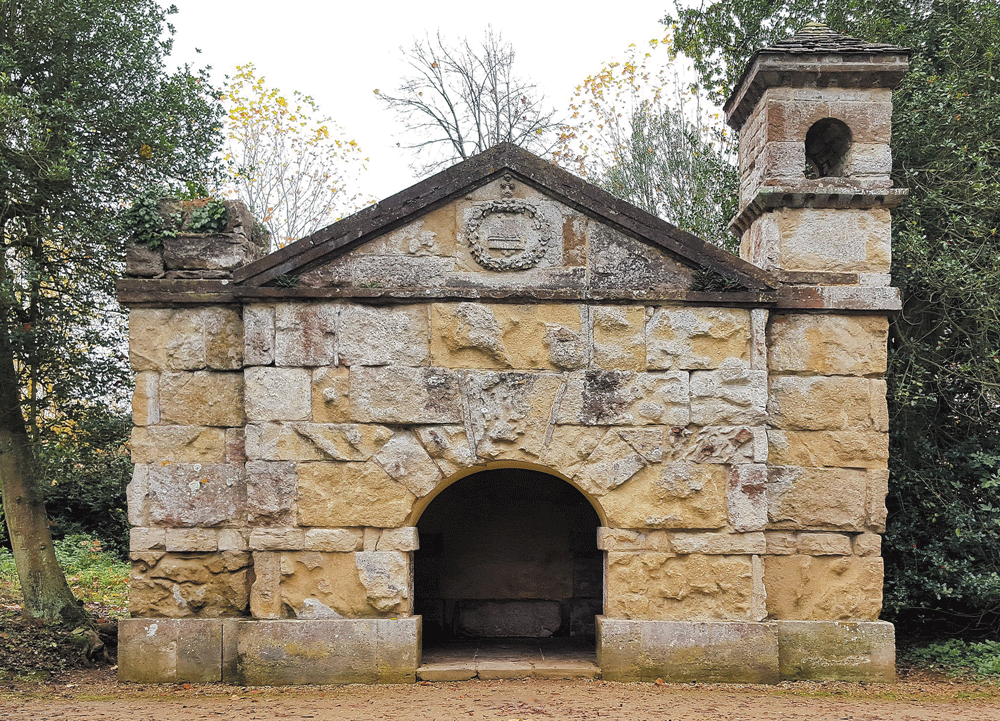
By Richard Hooper
Among the many forms of architectural garden follies that sprang forth in Georgian Great Britain, hermitages are among the most curious, providing a philosophical/mystical tone to one’s amblings through the landscape. They were small structures – usually one or two rooms – built from wood or stone and nestled into their immediate surroundings. Natural caves, serendipitously located, were also incorporated at times and might be used “as is” or enhanced with a facade with a doorway and perhaps a window or two. And, if one did not have a cave of one’s own, but thought it a necessity, one could have it built into a hillside – which, if lacking, could also be constructed.
Hermitages might look like a charming hovel or a well-crafted, tiny cottage. They were also built along the designs of pavilions or gazebos. They were a specialized form of the garden folly, inspired by a confluence of religion, druids, the secular naturalism of the philosopher Jean Jacques Rousseau, literary melancholy (all the rage), Merlin the Magician and mythical creatures from antiquity that lived in grottoes.
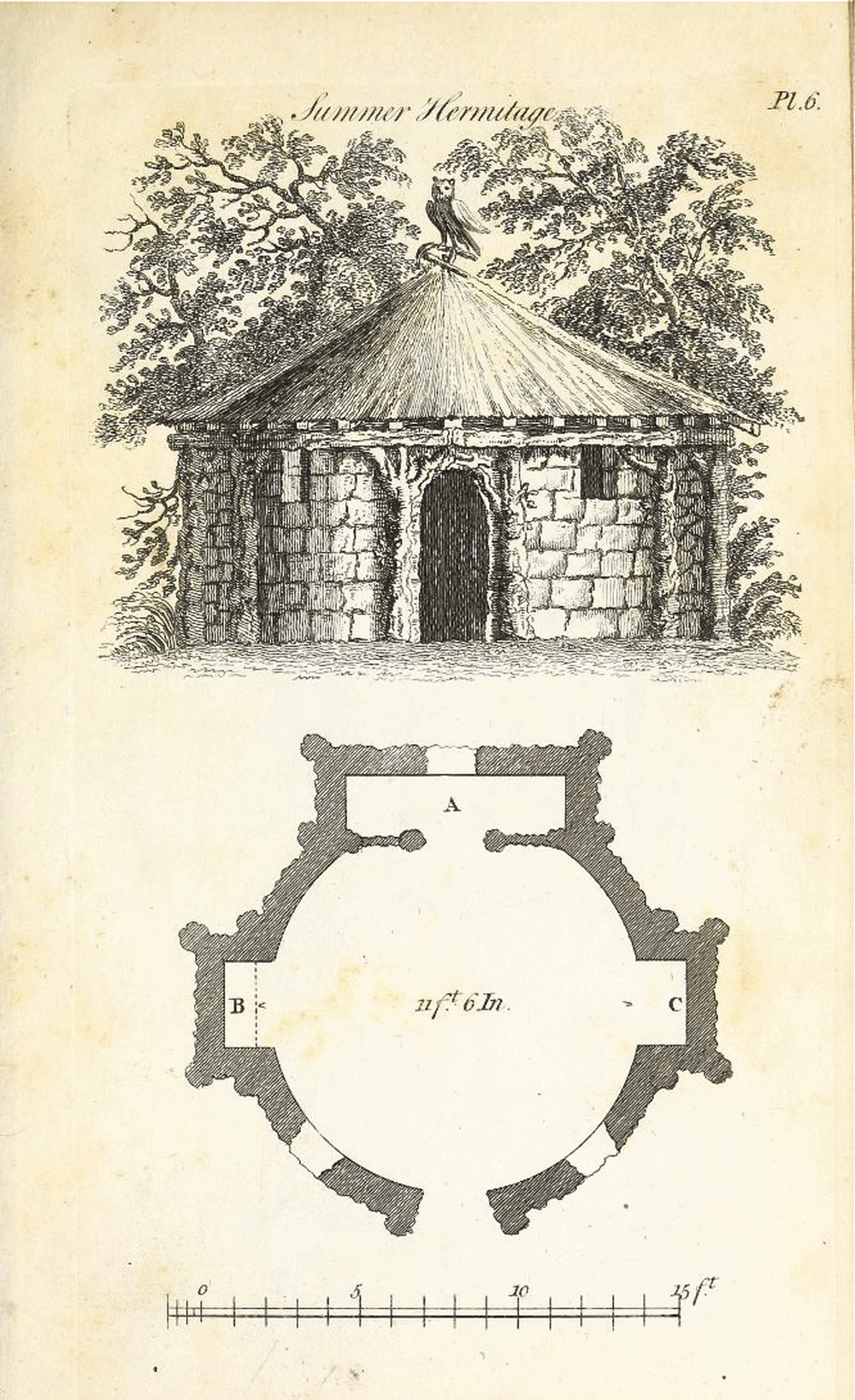
According to Gordon Campbell in The Hermit in the Garden (Oxford University Press, 2013), the first hermitage styled folly was designed by the architect William Kent for George II’s consort, Queen Caroline. Construction on the stone building, located on the site of the present-day Royal Botanic Gardens at Kew, commenced in 1730. It incorporated busts of five prominent English scientists and natural philosophers as part of the design. The queen also commissioned Merlin’s Cave, built in 1736. The King and Queen, both Germans, were using the structures to promote their Englishness. The structures proved to be very popular.
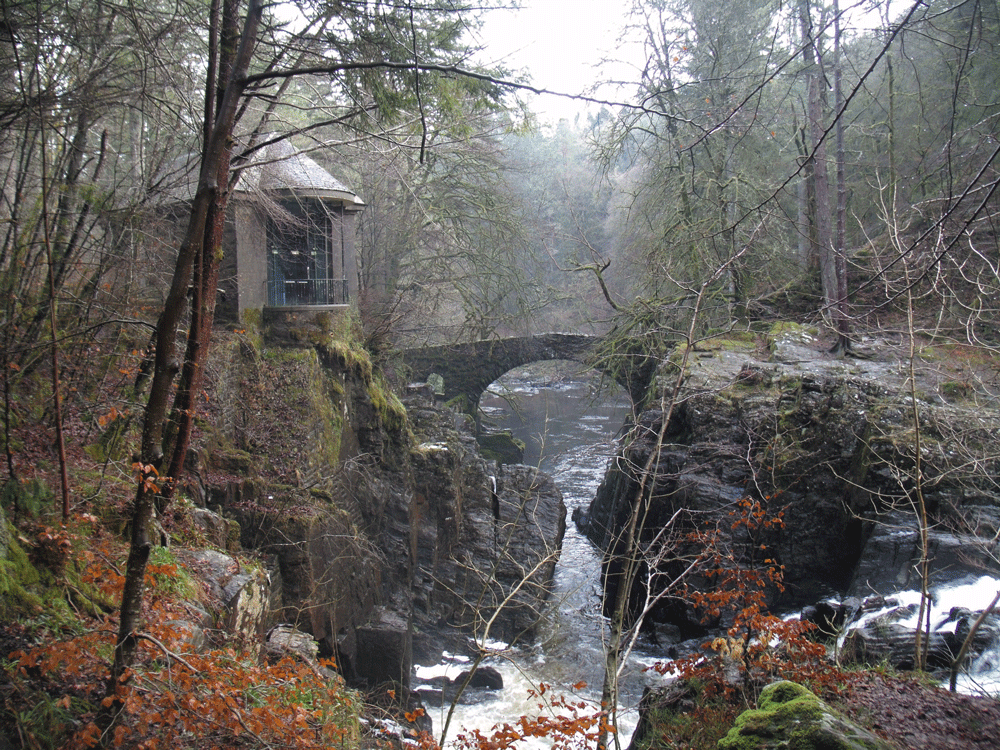
In 1731, Kent designed the second such folly to be constructed. Made for the first Viscount Cobham’s massive estate, Stowe, in Buckinghamshire, it was similar to that designed for the queen. Kent also designed a grotto at Stowe containing a statue of Venus. Unusual for the time, the gardens at Stowe were always open for visiting, which lead to Cobham producing the first guidebook for an English garden.
After Queen Caroline’s and Viscount Cobham’s hermitages were built, they began to proliferate throughout the British Isles.
There are nearly a hundred listed in The Hermit and the Garden. The fourth Duke of Beaufort had one installed at Badminton. The style became more rustic and in 1767, William Wrighte’s, Grotesque Architecture or Rural Amusement, was published, containing designs for seven hermitages and others for grottoes and other follies. His design for a “Summer Hermitage” included a floor composed of marrow bones from sheep laid upright.
From the outset, there were intimations of habitation. Queen Caroline’s Merlin’s Cave was populated with wax figures. Viscount Cobham’s nephew, Gilbert West, composed a poem about the gardens at Stowe in which he created the narrative that the hermitage there had been the last habitat of Malbecco, a character in Edmund Spencer’s The Faerie Queen. Decors of other hermitages implied a hermit in residence with props such as a book left open on a table with maybe a mug or pipe as well. “What bad luck; you’ve scared away the hermit. I do hope he returns.”
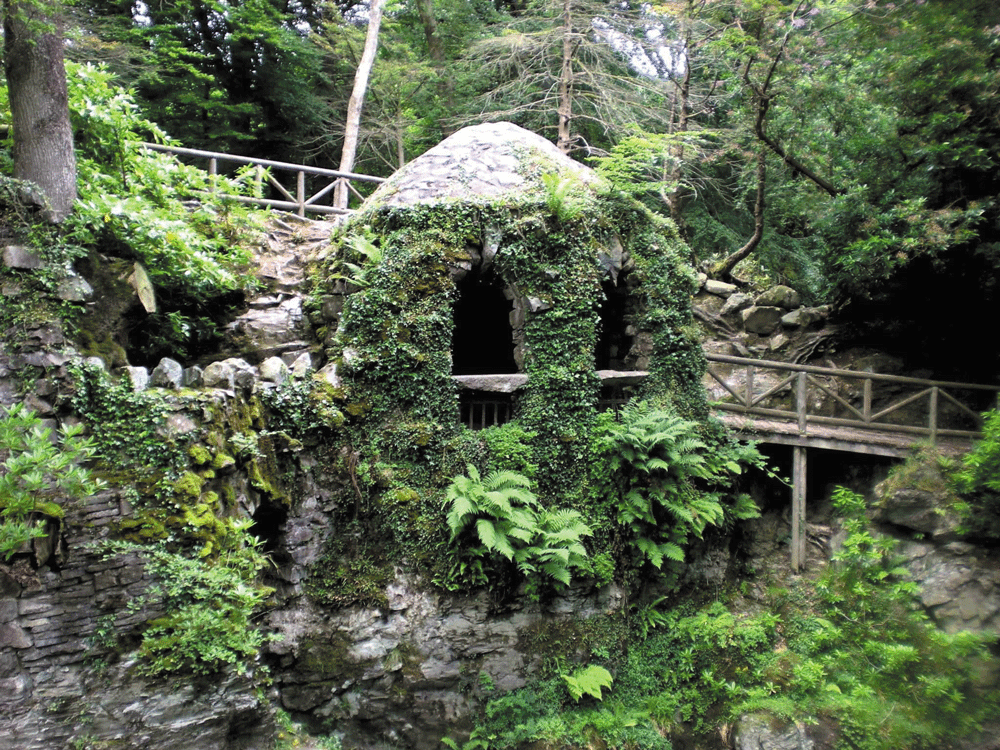

Stuffed and wooden mannequins also resided as hermits; some were automatons capable of movement. A few estates, most amazingly, even went so far as to employ real people as hermits-in-residence, a number of which were described in contemporary guidebooks.
Sometimes the hermit was the owner of the property or a relative. Such was the case with Gilbert White, author of The Natural History of Selborne. White had two hermitages in need of a hermit. That position was filled by his youngest brother, Reverend Henry White, who would play the role when Gilbert was entertaining guests.
Other hermits seem to have been hired for various lengths of time. Needless to say there, is a great deal of legend and lore regarding ornamental human garden hermits, and it is unknown if any ever fulfilled the more severe requirements laid out in some advertisements from the 1700s. Some of these stipulations were that the applicant not bathe or cut his hair or nails for a seven-year period of employment. Speaking might also have been forbidden. He could not leave the estate. He would be paid only at the end of the employment a lump sum of 500 to 700 pounds.
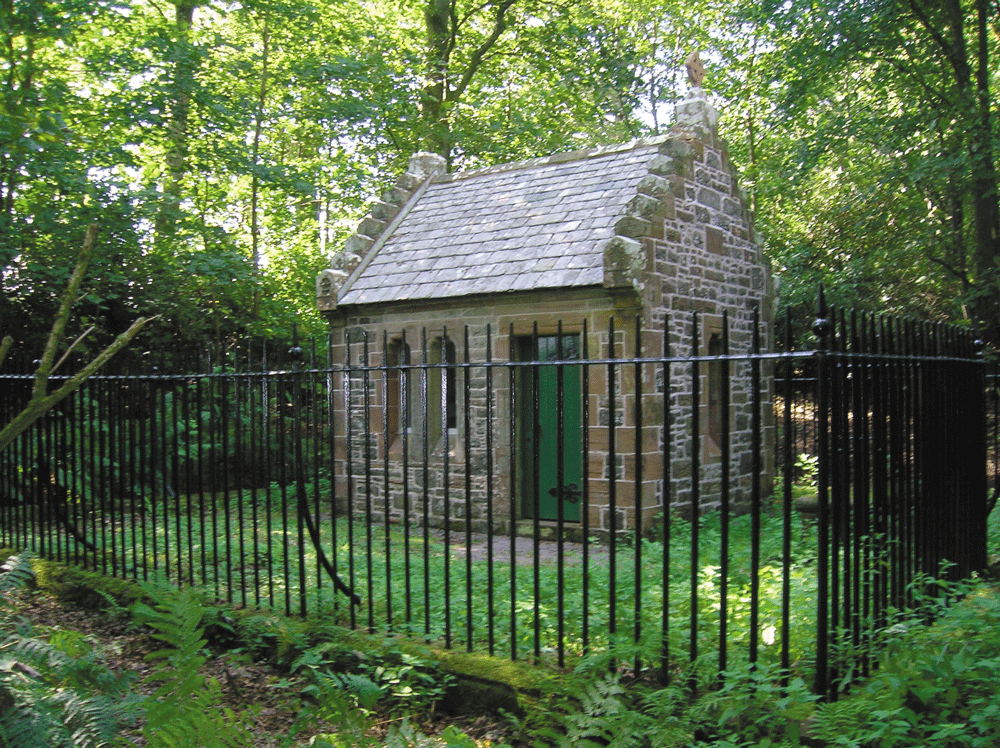
As this was the Age of Enlightenment, instead of monetary compensation, one advertisement stated that at the end of seven years the hermit would be made a gentleman. ML
The primary source for this article was The Hermit in the Garden by Gordon Campbell, Oxford University Press: 2013.
This story was originially published in Middleburg Life’s July 2018 issue.


